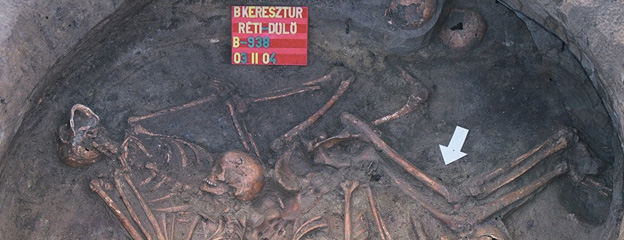Following the path of metalworkers – lectures at the Polish Academy of Sciences Wrocław Branch, Institute of Archeology
Invited by Bogusław Gediga, professor emeritus of the Polish Academy of Sciences Wrocław Branch, we had the opportunity to travel to Wroclaw between 7-9th October 2019, to give a lecture on the latest scientific achievements of the Momentum Mobility Research Group. We talked about the interaction between the Hungarian Bronze Age communities and those of the western part of Central Europe, present-day Germany, Austria, the Czech Republic, Moravia and Poland. The lectures covered results of multidisciplinary analysis of copper and bronze objects used during the early and middle Bronze Age (2500 to 1500 BC) of present day Hungary. The research was carried out in collaboration with the Wigner Research Center for Physics, the Center for Energy Research and the Curt-Engelhorn-Centre Archaeometry (CEZA gGmbH) in Mannheim. Based on the lead isotope studies by the laboratory of Mannheim, most of the copper and bronze objects examined from burials in Central and Western Transdanubia were found to be made from copper ores extracted in Bronze Age copper mines of the Gömör-Szepes (Slovak) Ore Mountains (Kiss et al. 2018).
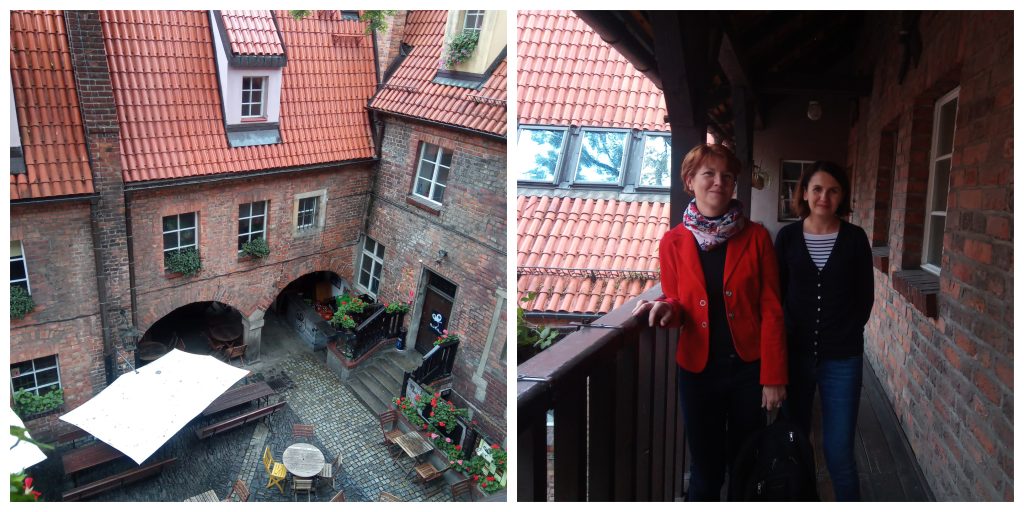
With one of our hosts, Małgorzata Markiewicz, at the Polish Academy of Sciences, Wrocław Institute of Archeology, located in a medieval prison building
In order to reduce our ecological footprint, we took a bus instead of a plane to Wrocław, by winding along the serpentines of the Low Tatras by Katowice. As a result, we were partly able to follow the 300 km route to the region of Banská Bystrica, which was followed by our 4000-years-old ancestors as well, who departed from Transdanubia and headed to the Slovak Ore Mountains to obtain copper ore for their bronze tools and weapons. The 55-60-year-old male buried near Balatonakali, considered to be one of the leaders of the Balaton Uplands, was equipped with nearly 1 kg of bronze (dagger, axes, spiral armring). The presence of the tin-bronze objects and a golden hair ring the grave of the Balatonakali chieftain, buried between 1950 and 1900 BC, proves that the man had played a prominent social role, similar to others buried in tumulus graves in the territory of present day Germany and Western Poland (Kulcsár–Kiss 2017).
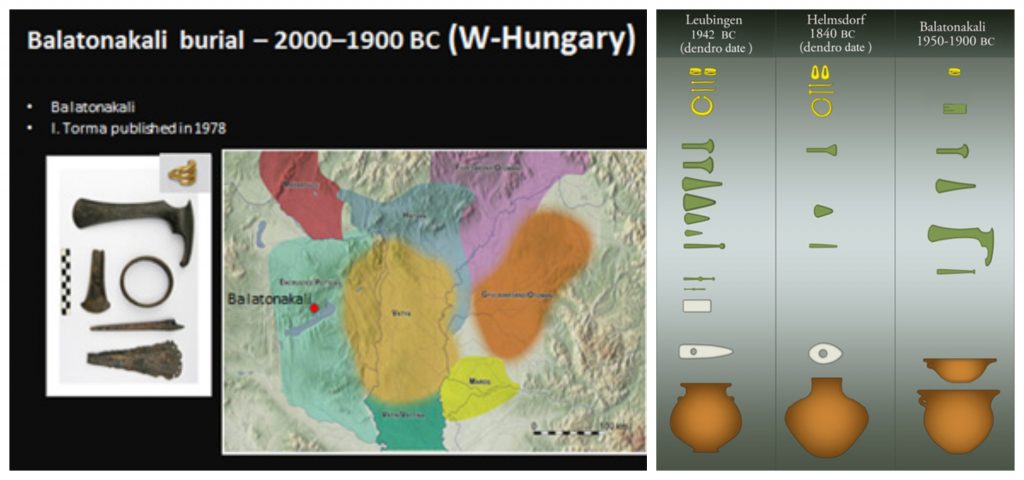
Objects of the princely grave of Balatonakali compared to the finds from the burials of Aunjetitz chieftains
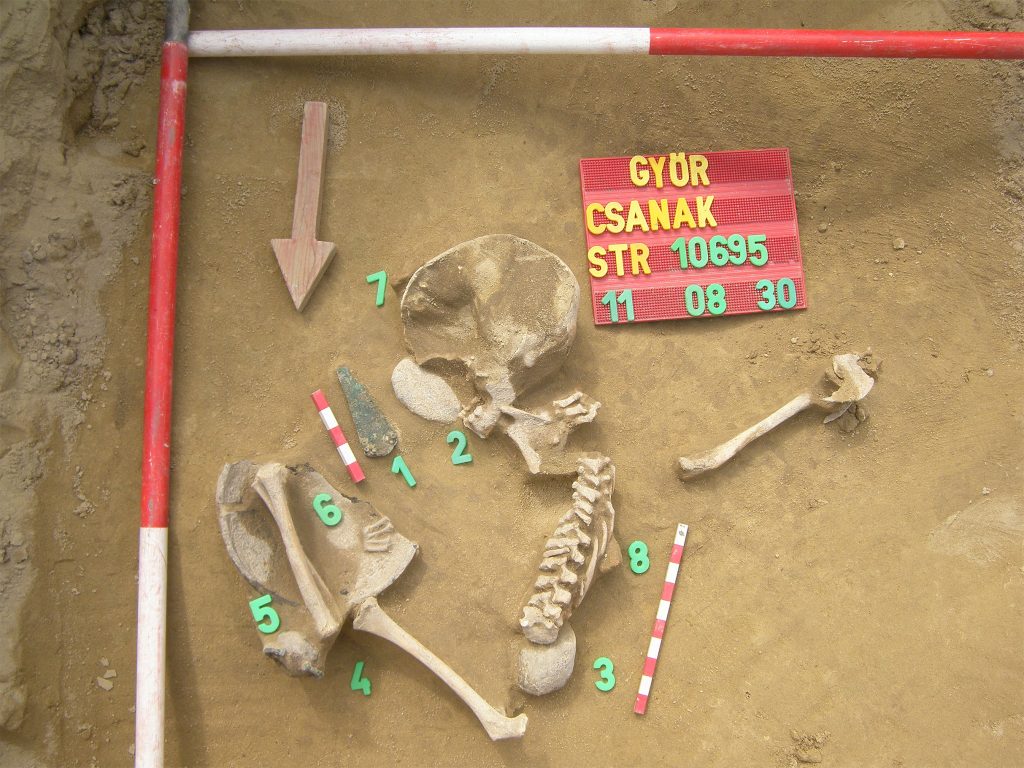
Grave Nr. 10695 at Győr-Ménfőcsanak, equipped by a bronze dagger (Nr. 1.; Photo: Ferenc Halász; Melis 2016, 2. kép 2)
Lead isotope analyzes of bronze objects on the largest cemetery of the culture in Hainburg, Austria, also suggest the exploitation of raw material sources from the Slovak Ore Mountains at the turn of the Hungarian Early and Middle Bronze Age. In the late phase of the culture (Mannersdorf cemetery), the use of copper ore mined at the Mitterberg region (Duberow et al. 2009; Radivojevic et al. 2018) can be observed.
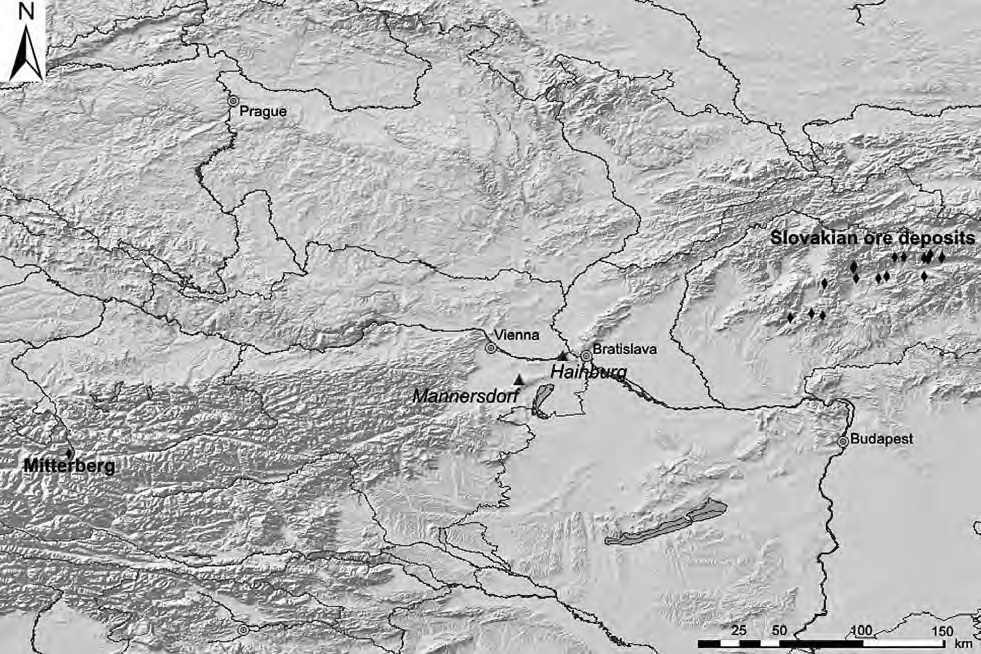
Location of the Gáta-Wieselburg culture in Hainburg and Mannersdorf, as well as the location of copper ore deposits in the Slovak Ore Mountains and in the Mitterberg region (Duberow et al. 2009, Fig. 1)
The presentation of our latest results provided a good opportunity to start discussions with the staff of the Institute of Archeology of the Polish Academy of Sciences, the University of Wrocław as well as the Museum of Archeology in Wrocław and to establish closer professional relations with our polish colleagues.
Viktória Kiss – Eszter Melis
Presentations
Viktória Kiss: New results on the Central European Bronze Age (2500-1500 BC) connections based on metal analysis from Hungary
Eszter Melis: An der südöstlichen Grenze des Aunjetitz Komplexes: Die Gáta-Wieselburg Kultur in Ungarn
References
Duberow, E., Pernicka, E., Krenn-Leeb, A. 2009. Eastern Alps or Western Carpathians: Early Bronze Age. Metal within the Wieselburg Culture. Eastern Alps or Western Carpathians: Early Bronze Age within the Wieselburg culture. In: Kienlin, T. L.– Roberts, B.(eds): Metals and Societies. Studies in honour of Barbara S. Ottaway. UPA 169. Bonn 2009, 336–349.
Gömöri J., Melis E., Kiss V.: A cemetery of the Gáta–Wieselburg Culture at Nagycenk (Western Hungary). Acta Archaeologica Academiae Scientiarum Hungaricae 69 (2018) 5–82.
Kiss, V., Barkóczy, P., Czene, A., Dani, J., Endrődi, A., Fábián, Sz., Gerber, D., Giblin, J., Hajdu, T., Káli Gy., Kasztovszky, Zs., Köhler, K., Maróti, B., Melis, E., Mende, B. G., Patay, R., Pernicka, E., Szabó, G., Szeverényi, V., Szécsényi-Nagy, A., Reich, D., Kulcsár, G.: People and interactions vs. genes, isotopes and metal finds from the first thousand years of the Bronze Age in Hungary (2500-1500 BCE). In: Genes, isotopes and artefacts – How should we interpret the movements of people throughout Bronze Age Europe? Multidisciplinary conference, Austrian Academy of Sciences, Vienna, 13-14. December 2018. Abstract book, 6.
Kulcsár G., Kiss V.: Újra a balatonakali sírról – The Bronze Age burial from Balatonakali – revisited. Tisicum 25 (2017) 73–80.
Melis E.: Középső bronzkori, csontvázas rítusú temetkezés Győr-Ménfőcsanak, Széles-földekről – Middle Bronze Age inhumation burials from Győr-Ménfőcsanak, Széles-földek. Régészeti Kutatások Magyarországon 2011-2014 – Archaeological investigations in Hungary 2011-2014. Budapest 2016, 62–75.
Radivojević, M., Roberts, B.W., Pernicka·E., Stos‑Gale, M., Martinón‑Torres, M., Rehren, T., Bray, P., Brandherm, D., Ling, J., Mei, J., Vandkilde, H., Kristiansen, K., Shennan, S.J., Broodbank, C.: The Provenance, Use, and Circulation of Metals in the European Bronze Age: The State of Debate. Journal of Archaeological Research 27 (2018) 131–183.


